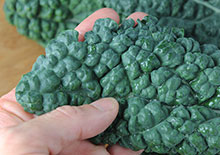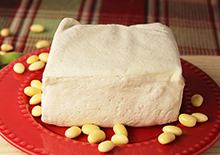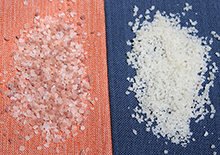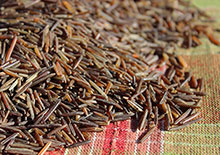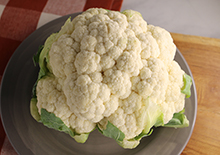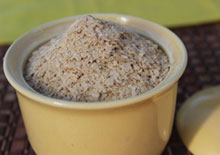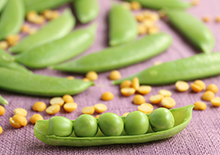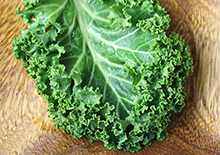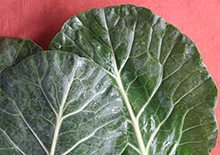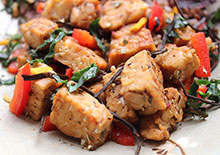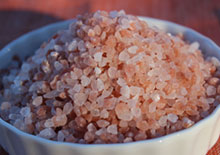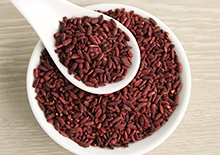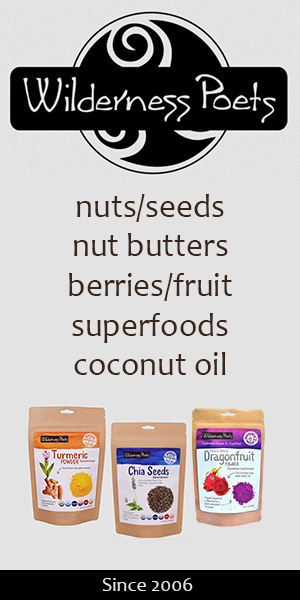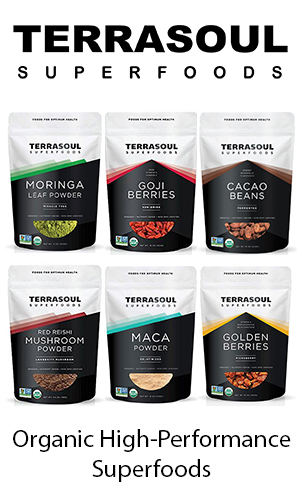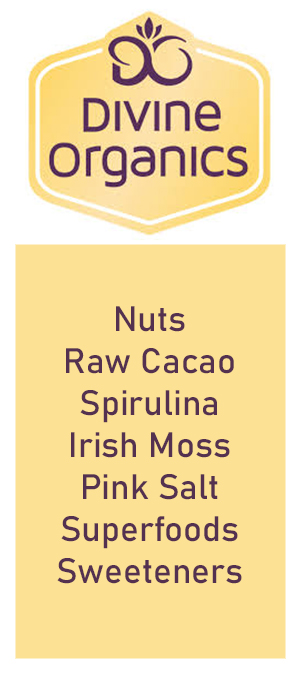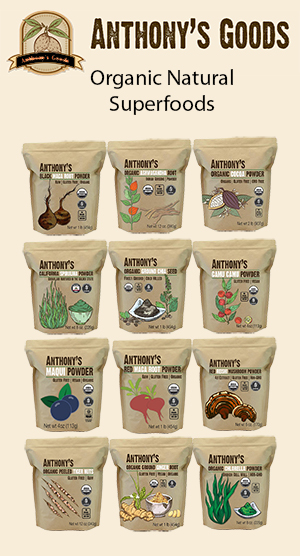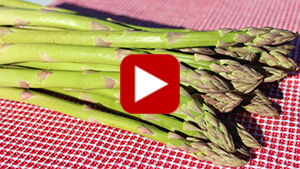- Home
- Plant-Based Cooking
- Asparagus Nutrition
Asparagus Nutrition Info, Potential Health Advantages

Asparagus comes from the young tender shoots of the Asparagus officinalis species harvested before the buds open and start to "fern out". After this period the asparagus shoot, commonly referred to as a "spear" will soon become too woody to eat.
Asparagus species were once classified in the Lily family, along with Allium vegetables, but now find their new botanical place in the asparagus family called Asparagaceae. Agave and yucca, both of which can look like a giant asparagus stalk, are also found in this category of plants.
Table of Contents
Intro | 5 Nutrition Facts | Why Scents Urine | How to Prepare | How to Cook | Precautions
While fresh local asparagus is typically harvested in the spring, usually from April to June in the Northern Hemisphere, it is now available during the off-seasons as an import crop. It is frequently found in 1-2 pound upright
bundles held together with a rubber band for display on produce shelves, sometimes in water.
We'll discuss more about how to prepare and cook asparagus below, but first, let’s jump right into asparagus nutrition and its potential health advantages.
5 Asparagus Nutrition Facts
1) Basic Asparagus Nutrition
2) Properties as a Diuretic
3) Good Source of Fiber
4) Reputation as an Aphrodisiac
5) Asparagus Compounds
1) Basic Asparagus Nutrition
One of the greatest nutritional attributes that asparagus has to offer is its abundance of vitamins and minerals which are particularly concentrated in the young shoots of this species.
It is notably a good source of essential nutrients like vitamin K, folate, vitamin A, vitamin C and thiamin with smaller amounts of others including riboflavin, B6, vitamin E and niacin. According to nutrition data, cooked asparagus is also high in minerals such as selenium, potassium, copper, manganese, phosphorus and iron as well as smaller amounts of zinc, magnesium and calcium.
When steaming this vegetable, we like to also consume the cooking liquid as this broth is also rich in these nutrients. It can also be saved as a vegetable stock for soups or gravies.
Cooked Asparagus - 1C (180g)
Vitamin K - 91mcg, 114%
Folate - 272mcg, 68%
Vitamin A - 1810IU, 36%
Vitamin C - 13.8mg, 23%
Thiamin - 0.2mg, 13%
Riboflavin - 0.2mg, 11%
Vitamin B6 - 0.2mg 10%
Vitamin E - 2.6mg 9%
Niacin - 1.9mg, 9%
Selenium - 11mcg, 16%
Potassium - 404mg, 12%
Copper - 0.2mg, 10%
Manganese - 0.2mg, 10%
Phosphorus 97.2, 10%
Iron 1.6mg, 9%
Zinc - 1mg, 7%
Magnesium 25.2mg, 6%
Calcium 41.4mg, 4%
(Percent Daily Values are based on a 2,000 calorie adult diet. * )
Most people prefer to consume asparagus as a cooked vegetable, but slender spears can also be eaten in their raw state.
Asparagus is low in calories and only contains a little bit of protein and of course the amino acid ASPARAGINE which gets its name from asparagus due to its high concentration.
2) Properties as a Diuretic
One of the asparagus stalk's well-known properties is as a mild natural DIURETIC. This is in part due to its asparagine content, which helps to remove residual ammonia from the body. (*)
As a diuretic eating green garden asparagus can foster the production of urine and helps to excrete excess water and salt, making you less likely to develop edema or other health-related issues like high blood pressure.
Useful for fluid regulation and support to the urinary system, asparagus shoots are likewise a source of POTASSIUM which helps to balance levels that may be lost in diuretic processes.
Why Asparagus Scents the Urine
Consuming asparagus is also known for its rather unique effect at "scenting the urine" sometimes producing a strong grassy odor.
This is due to the asparagusic acid compound, that when digested, makes a number of sulfur-containing derivatives. This is a harmless response that is noticeable about 20-30 minutes after intake but usually subsides within 4-6 hours.
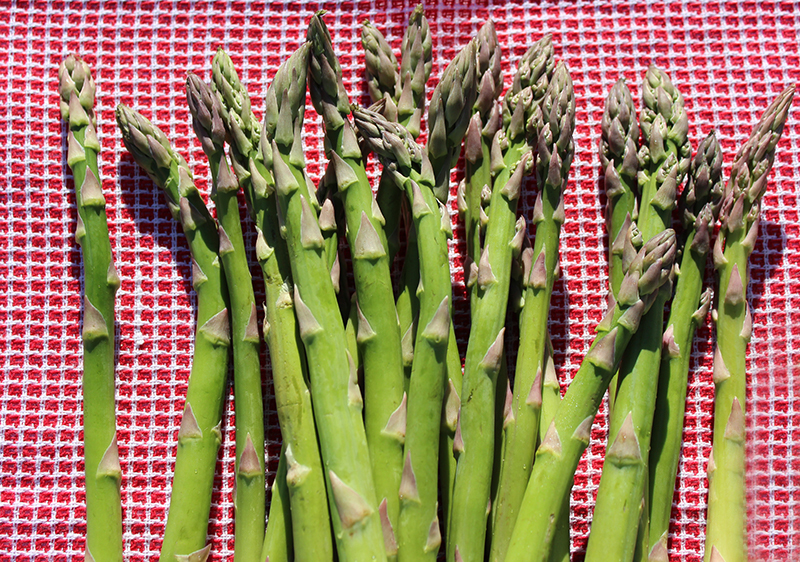
3) Asparagus Nutrition and Fiber Content
Asparagus is a great source of dietary FIBER for adding to meals as a side vegetable. Perfect for holiday occasions when heavier low-fiber foods are typically eaten, cooked asparagus is a common one served on Thanksgiving feast menus here in the U.S.
Asparagus is especially high in insoluble fiber which gives bulk to stool and supports bowel regularity.
One cup or 180 grams of cooked asparagus can contain about 3 grams of dietary FIBER, roughly 12% of the Daily Value based on a 2,000 calorie adult diet.
Likewise, asparagus and its soluble fiber content acts as a prebiotic food source for good gut bacteria. A healthy microbiome is associated with enhanced nutrient uptake in the intestinal tract.
4) Asparagus and Its Reputation as an Aphrodisiac
This claim is often linked to its upward-pointing stem arrows or "scales". These are the true leaves that hold the energy to develop if the stalk is left to grow.
Growing similar to herbal sex-tonics like cistanche, its long erect-standing and spear-like shape, in accordance with the Doctrine of Signatures, does suggest its potential usefulness in this area. The vegetable was also called points d'amour ("love tips") in 18th Century Europe, which added to this reputation.
While asparagus root species, like Chinese asparagus (Asparagus lucidus) and the ayurvedic herb called shatavari (Asparagus racemosus), are known for these stimulating qualities, according to our research, we have not found clear evidence that this alleged attribute is indeed true for the garden vegetable itself.
5) Other Health-Supporting Asparagus Compounds
Eating cooked or raw asparagus is a great way to increase your dietary intake of certain antioxidants like gallic acid, rutin, quercetin, kaempferol and others. (Source)
Garden asparagus is composed of saponins and fructooligosaccharides, components responsible for its sweet taste. Asparagus saponins have been researched for their health-promoting influence. (*)
Fructooligosaccharides, also known as FOS, are largely regarded as one of the prebiotic substrates for microflora in the colon. FOS is common in other plant foods and natural sweeteners like yacon syrup and agave nectar.
How to Prepare Asparagus
Asparagus stalks are known to have a fibrous sometimes woody base. This section is therefore usually removed before cooking.
There are essentially three ways to prepare and trim asparagus to remove the tough parts.
1) Cut the Asparagus - This is the easiest method. Simply take a knife and remove about one inch or more at the base, depending on thickness. There is of course the chance you may cut off too much or not enough using this procedure.
2) Snap the Asparagus - The snap technique can help you prevent wasting any good parts, but not always and it does take longer. The idea is that the stalk breaks right before it starts to get tough. This practice involves snapping of the stems in a one-by-one rhythm.
3) Peel the Asparagus - About 1-3 inches of the base can be peeled to remove most of the fibrous skin. This will preserve the tender inside so less is wasted, but it does take the most effort. This was apparently Julia Child’s favorite method.
(Remember, regardless of the method used, you can always save the peels and ends for making homemade vegetable stock.)
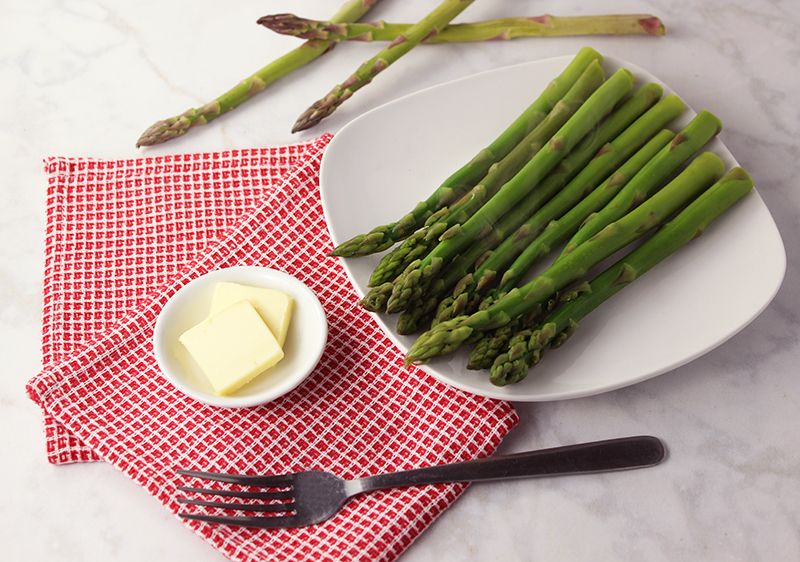
How to Cook Asparagus
While asparagus can be chopped and cooked, it is frequently prepared and served by the stalk or spear.
Depending on your taste preferences, asparagus can be briefly cooked to produce a firmer crunchier texture or cooked to provide a soft tender consistency. From a culinary perspective, it is best not to overcook this vegetable which can create a mushy end result with less nutritive value.
The common ways to cook asparagus include:
- Blanching
- Steaming
- Sautéing
- Stir-Frying
- Roasting
- Grilling
We are most familiar with steaming methods which only takes between 5-10 minutes depending on thickness or desired texture.
While asparagus is often prepared as a side dish, there are many ways to incorporate it into recipes unique to various cultures around the world.
Like the artichoke, it is sometimes served as a finger food typically with a dipping sauce such as olive oil, butter, aioli or mayonnaise but it is a classic accompaniment to hollandaise sauce.
Precautions:
Generally, asparagus is a safe food to include in the average diet. Excessive consumption of asparagus can however irritate the kidneys. Consult your healthcare professional before eating asparagus if you are pregnant, nursing, taking any medication or if you have a medical condition.
